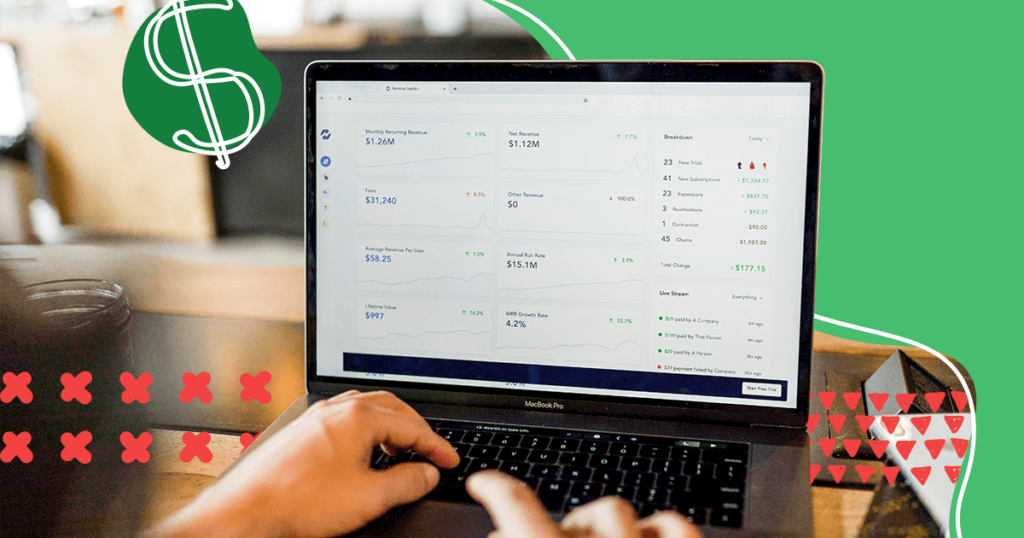When it comes to growing your SaaS company, one of the most important aspects you need to pay attention to is the sales process.
However, attracting new customers and closing deals with a SaaS product are often much different than in other industries.
In fact, it is more crucial than ever to know your target buyer and how your SaaS product suits their needs.
But not all SaaS sales process actions allow you to make money. That’s why it is so important to analyze your company’s flow and determine areas where you can increase attention and points that can be almost eliminated.
Keep reading to learn whether or not you’re really making money with your SaaS sales process.
What is SaaS Sales?
SaaS sales is essentially the overall buyer journey from the moment they hear about your platform until after they become paying customers.
The overall process has several steps including:
- Prospecting.
- Qualifying leads.
- Upselling.
- Dealing with objections.
- Closing the deal.
In addition, the nurturing process of keeping paid customers happy is also a big part of the SaaS sales cycle.
There are multiple SaaS sales models that include everything from self-service to enterprise.
Deciding which one to choose generally comes down to the price point of your product, your target market, and the level of features your platform provides.
How Does the SaaS Sales Process Work?
The SaaS sales process often depends on the size of the company and the buyer persona you are trying to reach.
The following steps will get you started.
Step one: identifying the target customer
In simple terms, this means knowing exactly who you are going to sell to.
All members of the marketing and sales teams should understand the exact buyer personas attached to your SaaS platform.
Create them to encompass the varying individuals who might find value in your offering.
Don’t be afraid to update these personas periodically to reflect those who are actually becoming paid customers.
Step two: prospecting
As you might expect, this means actually going out and finding potential SaaS platform customers to sell to.
There are two methods to consider: active and passive.
➤ Active prospecting includes finding current decision-makers to speak with, then contacting those leads directly.
➤ Passive prospecting means using elements like video marketing, blogging, content marketing, social media advertising, and other methods to get potential customers interested in your offerings.
Both are totally viable. In fact, some companies will use a combination of the two for maximum effect.
For example, a SaaS enterprise model might have a sales team devoted to large contracts but still publish content relating to their niche on their blog once a week.
Step three: qualifying
This is the step of the SaaS sales process where your team works to ensure the prospect is a good candidate for your product.
The actual steps involved with this process will depend on your sales model, niche, and the functions of your SaaS platform.
Often, this means asking more questions or following up.
However, in a self-service SaaS sales model, it might just mean offering a freemium or free trial offer where the lead gets to test out the platform.
Deciding what the qualification model is for your needs is a big part of the overall process of selling a SaaS.
Step four: upsell
The next step in the SaaS sales process is the upsell.
This is where your sales team attempts to contact customers directly in order to upgrade them to additional products or turn them into paying customers from a free trial.
Depending on your product and niche, this might involve having a salesperson contact the subscriber directly.
If your business model is primarily self-serve, it could just mean having a series of automated emails to help drive attention to the platform.
Remember that upsells are a heavy money-making activity, so they should be taken seriously.
If you aren’t making enough of a profit with the previous steps in this process, you might consider expanding the upsell to include more features or a higher price point.
Step five: dealing with objections
In every sales process, there are always objections.
The range can be somewhat large, but most involve either price or features.
Your sales team should know how to adequately deal with the most common objections.
This means ensuring they have proper training regarding all of the capabilities of your SaaS, plus an understanding of competing solutions.
By giving them the knowledge and tools necessary, your sales team can turn the objection phase of the SaaS sales process into a profitable one.
Step six: closing the deal
One of the last steps in the SaaS sales process is finally closing the deal.
This is where the customer agrees to pay for the service and the actual contract is signed.
As you would imagine, this is one of the most crucial steps of ensuring that your SaaS sales are profitable.
However, you need to take a couple of aspects into consideration.
➤ First, not all SaaS platforms require this step.
Usually, it is only dependent on those that offer a high price level, bigger upgrades, or an enterprise solution.
➤ Second, your sales team could have negotiated a special discount in order to reach this part of the process.
Make sure you’re taking that aspect into consideration when determining if your platform is making a profit.
Step seven: nurturing
The final portion of the SaaS sales cycle isn’t about making money, but more focused on retaining it.
Customer attrition can be a problem if you aren’t checking in with platform users on a consistent basis to determine their level of satisfaction.
Have a plan to get in touch on a periodic basis to obtain feedback, whether that’s through actual contact from your customer service team or through an automated message.
Even interactive content like surveys or usage tracking can be included in the nurturing process.
However, it is important to note that nurturing activities generally cost a bit to get started.
But when you look at the crucial role they play in extending the customer life cycle, you can see why they’re so important.
How to Sell Software-as-a-Service
Selling SaaS really comes down to two factors: understanding the value of your platform while also knowing the exact needs of your target market.
If you’re building a new SaaS platform, you’ll want to decide what sales process model you’re going to follow.
Three of them are the most common:
Self-service
This is where the customer finds your platform, on their own, signs up for your service or a free trial, and goes through an onboarding process themselves.
It is most common in B2C or B2B small business applications.
Transactional
In this sales model, a sales team helps find customers and works on a direct basis with the onboard process.
Often, these types of SaaS applications have a slightly higher price ticket or are geared as a small enterprise model.
Enterprise
To sell SaaS access on an enterprise model, you’ll need a dedicated sales team and a personalized approach to customer education and onboarding.
The Challenges of a SaaS Sales
Of course, there are a few key challenges associated with SaaS sales that you’ll want to be aware of.
Longer sales process
The sales process is often much longer than traditional sales.
Since a lot of the communication is done over email, phone calls, or Zoom meetings, it might be harder to try to position your platform as the best solution to the customer’s needs.
Too much competition
The overall market changes rapidly and your niche might be increasingly competitive.
This is why it is always crucial to know the pros and cons of your SaaS application in contrast to what others have to offer.
Lack of experience
Understanding what aspects of the SaaS sales process to minimize and which ones to focus on can be challenging for some new companies.
When you start to look at each step and determine how it directly relates to your specific needs, you can generally determine whether you’re really making money with your SaaS sales process or if adjustments are required.
Start Questioning Your Saas Sales Process
This is the only way to ensure that your SaaS company is making a profit.
Do you really need a team of enterprise sales representatives to market a simple B2C solution? Or can you help reduce your budget and use those funds to increase marketing activities?
Once you’ve started looking at these critical aspects, you can really hone in on how your SaaS goes through each step and whether more attention needs to be given to key money-making elements.
Ready to learn how to improve your SaaS sales process?
The answer might be in interactive content. Check our blog post and find out!






